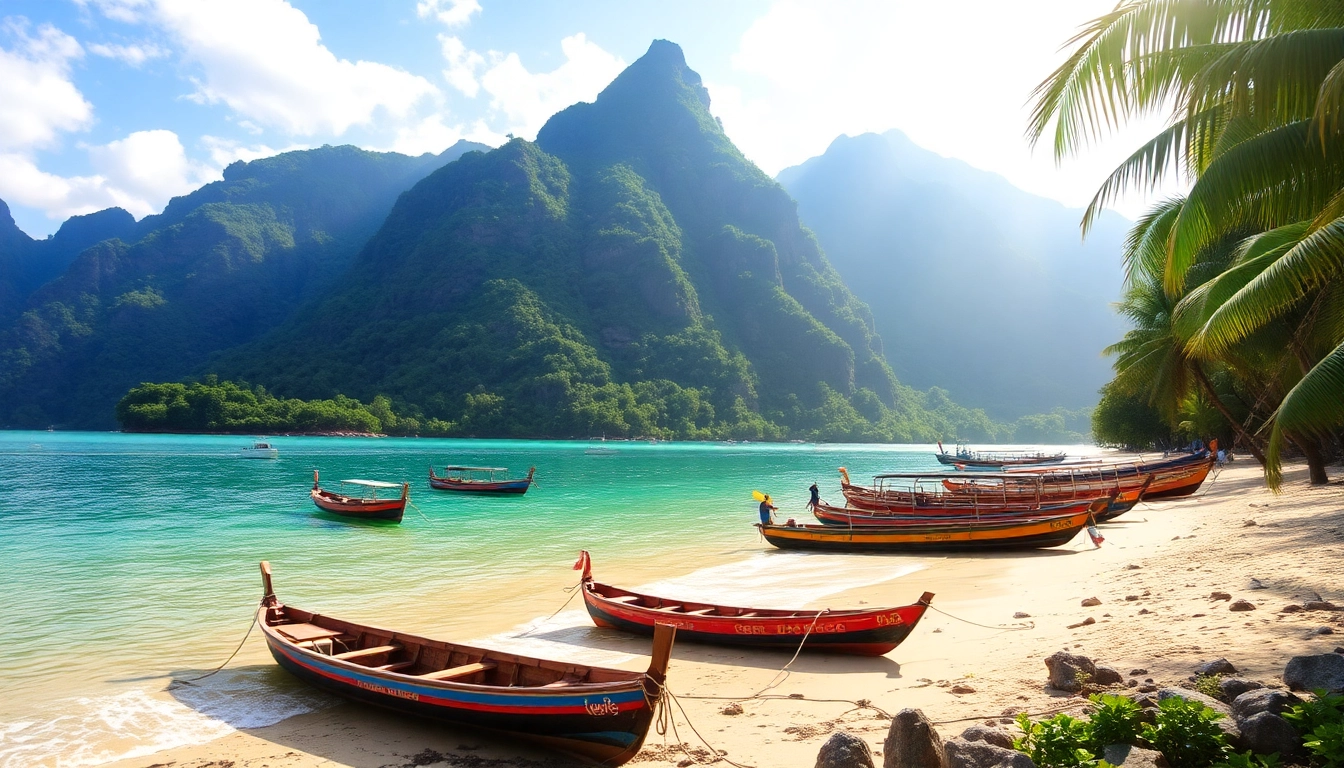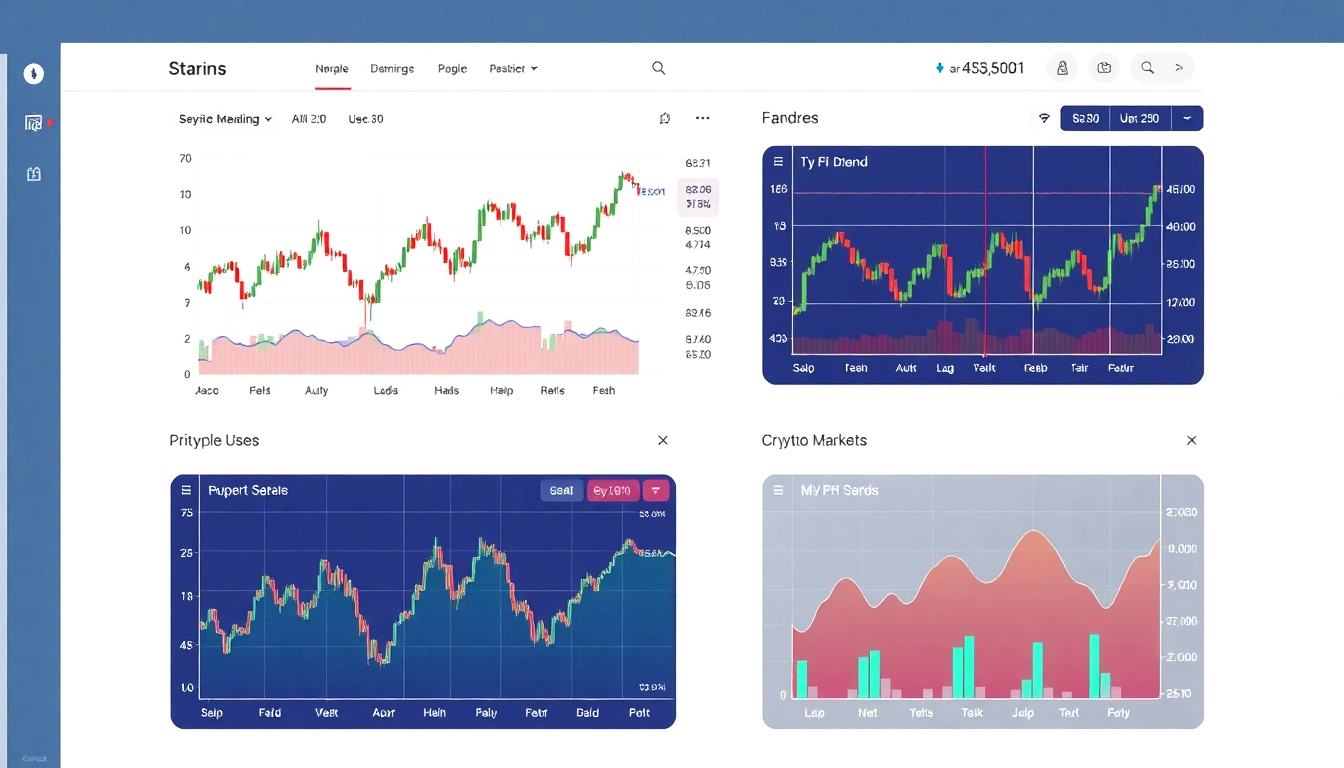
Understanding Hiking: Definition, Types, and Benefits
What Is a Hike? Clarifying the Concept
The term hike encapsulates a broad spectrum of outdoor activities centered around walking or trekking through natural environments. At its core, a hike is a long, vigorous walk, often undertaken on trails, footpaths, or rugged terrains that weave through forests, mountains, or countryside landscapes. Historically rooted in European leisure and exploration traditions dating back to the 18th century, hiking has evolved into a globally embraced pursuit that combines physical activity with the appreciation of nature’s tranquility.
In contemporary usage, hike frequently connotes an adventure that is both physically demanding and mentally rejuvenating. Unlike casual walking, hiking often involves navigating varied terrains—steep inclines, uneven rocky paths, dense forests, and mountain passes—requiring a degree of planning, endurance, and safety awareness. Recognized by many as an activity that promotes health, connection with nature, and cultural exploration, hiking is accessible to a wide range of fitness levels with appropriate preparation.
Different Types of Hikes: Day Trips, Trekking, and Multi-day Journeys
The world of hiking is diverse, and understanding its classifications can help enthusiasts choose the experience that best fits their interests and fitness levels. Broadly, hikes can be categorized into three main types:
- Day Hikes: These are short, often beginner-friendly excursions that last a few hours, typically within a single day. Many popular trails in national parks or protected areas fall into this category, offering scenic views without requiring overnight equipment. For example, a morning trek up Mount Bromo allows travelers to enjoy sunrise views and return before nightfall, making it ideal for those with limited time.
- Trekking: A step above casual walks, trekking involves traversing longer distances over multiple days, often through remote or rugged terrains. It challenges hikers physically and mentally, requiring proper equipment and preparation. Trekking in Indonesia, such as the ascent of Mount Rinjani, exemplifies this level of adventure, offering compelling rewards like panoramic vistas and cultural encounters with local communities.
- Multi-day Hikes and Backpacking: These journeys extend over several days or weeks, demanding comprehensive planning including food supplies, camp gear, navigation tools, and safety measures. Multi-day hikes allow for immersion in untouched wilderness, exploration of lesser-known regions, and deeper engagement with nature’s rhythms.
Each hiking type offers unique experiences, with varying degrees of difficulty, scenic beauty, and logistical considerations. Choosing the appropriate style depends on individual goals—whether for health, adventure, cultural exploration, or simply reconnecting with nature.
Physical and Mental Benefits of Hiking for All Levels
Engaging in regular hikes yields a multitude of health benefits supported by extensive research. Physically, hiking improves cardiovascular fitness, strengthens lower body muscles, enhances balance and coordination, and aids in weight management. For example, a study by the Harvard Medical School highlights that 150 minutes of moderate activity, like hiking, per week significantly reduces the risk of heart disease.
Beyond physical health, hiking offers profound mental health advantages. Exposure to natural environments reduces stress, improves mood, and bolsters mental clarity. Eco-psychologists emphasize that immersion in nature’s serenity can diminish anxiety and depression, fostering a sense of well-being. Even participants at beginner levels experience these benefits, making hiking an inclusive activity for individuals of all ages and fitness background.
Practical strategies include setting realistic goals, gradually increasing hike difficulty, and engaging in group or solo hiking adventures tailored to one’s capacity. For example, senior hikers or those with mobility challenges can opt for well-maintained trails that promote safe and enjoyable experiences while still reaping health benefits.
Planning Your Hiking Adventure in Indonesia
Selecting the Perfect Trail: Factors and Recommendations
Indonesia, with its diverse topography—from volcanic mountains to lush rainforests—offers a veritable paradise for hikers. When choosing a trail, consider the following factors:
- Difficulty Level: Assess your fitness and experience. For beginners, trails like Gunung Luhur or Taman Nasional Bali Barat provide manageable options.
- Duration and Distance: Match the trail length with your available time—whether a brief half-day jaunt or an extended multi-day expedition.
- Altitude and Terrain: Prepare for elevation changes; trekking Rinjani or Ijen involves higher altitudes and potentially challenging terrains.
- Cultural and Natural Attractions: Seek trails that highlight Indonesia’s unique biodiversity and cultural sites, such as traditional villages or volcanic craters.
- Accessibility and Permits: Check whether the trail requires special permits or guided tours, and plan logistics accordingly.
For first-time hikers or visitors unfamiliar with the region, local guides or tour operators can simplify logistics and enhance safety. They also provide insider tips on best times to hike, weather conditions, and cultural sensitivities.
Gear and Equipment: Must-Haves for a Safe Hike
Proper gear is essential for an enjoyable and safe hiking experience. Key equipment includes:
- Footwear: Durable, waterproof hiking boots with good traction are indispensable, especially for rocky or muddy trails.
- Clothing: Layered clothing suitable for variable weather conditions—breathable shirts, moisture-wicking base layers, and waterproof jackets.
- Navigation Tools: Reliable maps, GPS devices, or smartphone apps like AllTrails can assist in waypoint tracking and route finding.
- Safety Equipment: First aid kit, headlamp or flashlight, whistle, and multi-tool enhance safety for unforeseen emergencies.
- Hydration and Nutrition: Sufficient water supply and energy-rich snacks to sustain your energy levels during lengthy hikes.
- Other Essentials: Sun protection (hat, sunglasses, sunscreen), insect repellent, and communication devices for remote areas.
Investing in quality gear tailored to Indonesian terrains ensures comfort and preparedness for diverse environmental conditions.
Scheduling and Safety Tips for an Enjoyable Experience
Effective planning minimizes risks and maximizes enjoyment. Some crucial tips include:
- Weather Check: Always monitor local weather forecasts before heading out, especially during monsoon seasons or volcanic activity alerts.
- Timing: Aim to start early in the day to avoid midday heat, particularly in equatorial Indonesia, and ensure adequate daylight for your hike.
- Inform Others: Share your itinerary with friends or family and, if possible, carry a communication device for emergencies.
- Permits and Regulations: Comply with local conservation rules, carry necessary permits, and respect wildlife and cultural sites.
- Physical Readiness: Know your limits; do not push beyond comfort, and include rest breaks to prevent exhaustion.
Experienced hikers recommend carrying a contingency plan, such as knowing escape routes or nearby shelters, especially for remote or challenging trails.
Top Hiking Destinations in Indonesia
Valley and Mountain Trails: Rinjani, Bromo, and Ijen
Indonesia’s volcanic landscape is a magnet for hikers seeking dramatic scenery and adventure. The imposing Mount Rinjani in Lombok stands as Indonesia’s second-highest volcano, offering challenging multi-day treks with stunning crater lakes, hot springs, and panoramic views from the summit. Nearby, Mount Bromo, renowned for its surreal sunrise over the sea of sand, provides a relatively accessible experience suitable for beginners and seasoned hikers alike.
Ijen Volcano, famed for its turquoise acidic crater lake and blue lava, invites night hikes for a surreal spectacle. Each of these destinations offers unique natural phenomena and cultural significance, making them must-visit sites for any hiking enthusiast exploring Indonesia.
Hidden Gems and Lesser-Known Trails
Beyond the popular spots, Indonesia boasts numerous lesser-known trails that remain relatively untouched. For instance, the Kerinci Seblat National Park in Sumatra offers boutique trekking through rainforest biodiversity, while the caves and waterfalls of Tanjung Puting provide an alternative eco-adventure.
Traveling off the beaten path allows hikers to experience genuine local culture, pristine ecosystems, and solitude away from crowds. These trails often require more detailed planning but reward explorers with authentic encounters and undiscovered beauty.
Local Tips for an Authentic Indonesian Hiking Experience
Engage with local communities for cultural insights and obtain relevant permissions. Respect local customs and environmental regulations, practicing leave-no-trace principles. Learning basic Indonesian phrases can facilitate better interactions. Consider hiring local guides who possess invaluable knowledge of the terrain, flora, fauna, and safety nuances.
Executing Your Hike: Techniques, Navigation, and Etiquette
Trail Navigation Skills and Using Maps or Apps
Navigational proficiency is vital, especially on less-marked trails. Traditional tools like topographic maps, compass, and altimeter are foundational skills. Digital tools, such as GPS devices or smartphone apps like Hike Indonesia or Maps.me, can enhance accuracy. Always have a backup plan, including offline maps, in case of signal loss.
Practice triangulation and waypoint marking to stay on course. For example, in dense forests or volcanic terrains, constant situational awareness prevents getting lost and ensures timely recovery in emergencies.
Hiking Techniques for Challenging Terrain
Techniques vary depending on terrain:
- Descending: Use controlled, toe-first steps to reduce strain on knees.
- Climbing: Maintain three points of contact—hands and feet—for stability.
- Rocky and Steep Sections: Use trekking poles for balance and reduce fatigue.
- Crossing Streams or Slippery Surfaces: Select the most stable route, use stepping stones if available, and keep your center of gravity low.
Proper technique minimizes injury risk and conserves energy, critical on long or difficult hikes.
Respectful Hiking: Leave No Trace Principles
Preserving Indonesia’s natural beauty requires responsible outdoor ethics:
- Plan ahead to minimize waste and impact.
- Stay on established trails to prevent erosion.
- Carry out all trash, including biodegradable waste.
- Respect wildlife and cultural heritage sites—avoid disturbing animals or sacred places.
- Be courteous to fellow hikers and local residents.
These principles ensure that future generations can enjoy Indonesia’s pristine landscapes as you do today.
Tracking Progress and Measuring Success
Recording Your Hike: Journals and Digital Tools
Documenting your hiking experiences enhances personal growth and provides motivation for future adventures. Traditional journals allow for detailed notes on trail conditions, flora, fauna, and emotional reflections. Modern digital tools like Strava or AllTrails enable GPS tracking, statistic analysis, and photo sharing, creating a comprehensive record of each journey.
Many apps also offer social features, fostering connection with a global community of hiking enthusiasts, facilitating advice exchange, and inspiring new destinations.
Analyzing Your Performance and Setting Goals
Post-hike analysis involves evaluating distance, elevation gain, average speed, and energy expenditure. Setting realistic, incremental goals—such as increasing distance by 10% per month or conquering higher peaks—motivates continuous improvement. Using collected data, hikers can tailor their training plans, identify areas for technique refinement, and enhance overall safety.
Sharing Your Hiking Stories and Building a Community
Sharing experiences through blogs, social media, or local clubs fosters camaraderie and encourages others to explore Indonesia’s trails. Authentic storytelling about challenges faced, scenic highlights, and cultural interactions provides inspiration and practical insights for fellow hikers.
Many online platforms host forums and groups dedicated to Indonesian trekking, facilitating knowledge exchange and creating a supportive environment for beginners and veterans alike.




